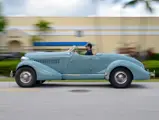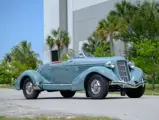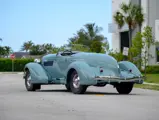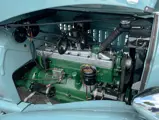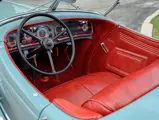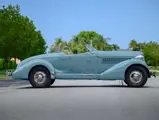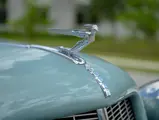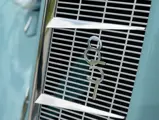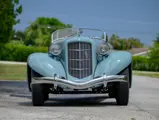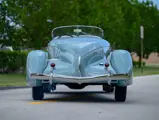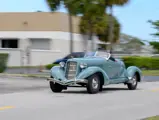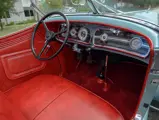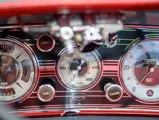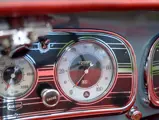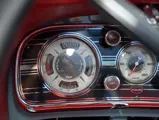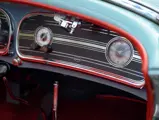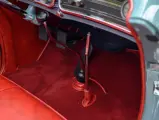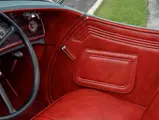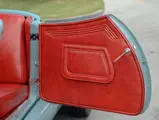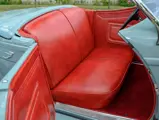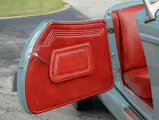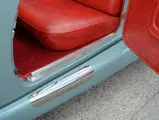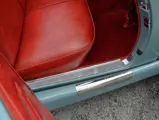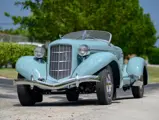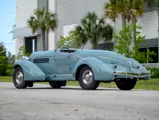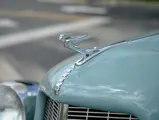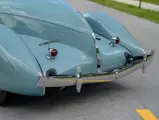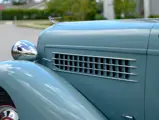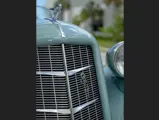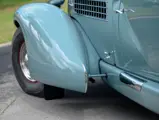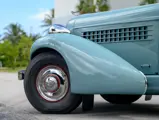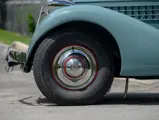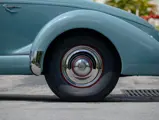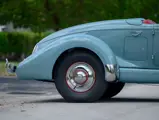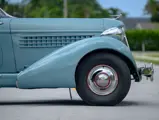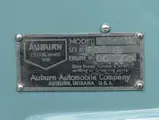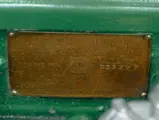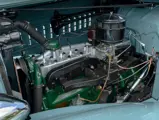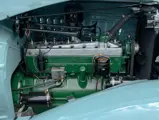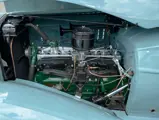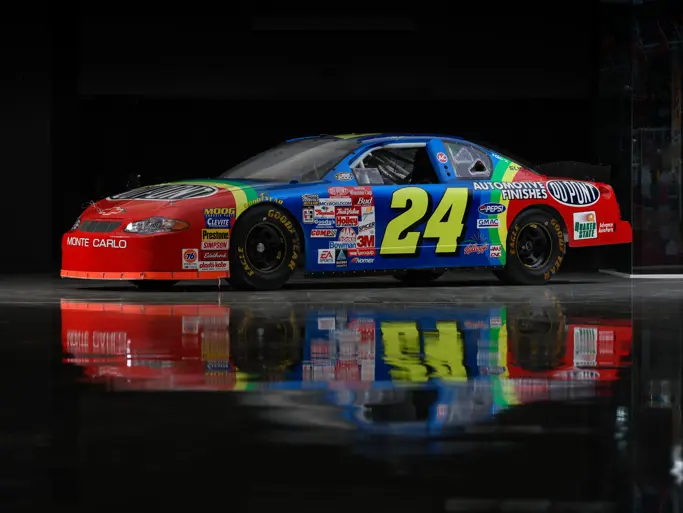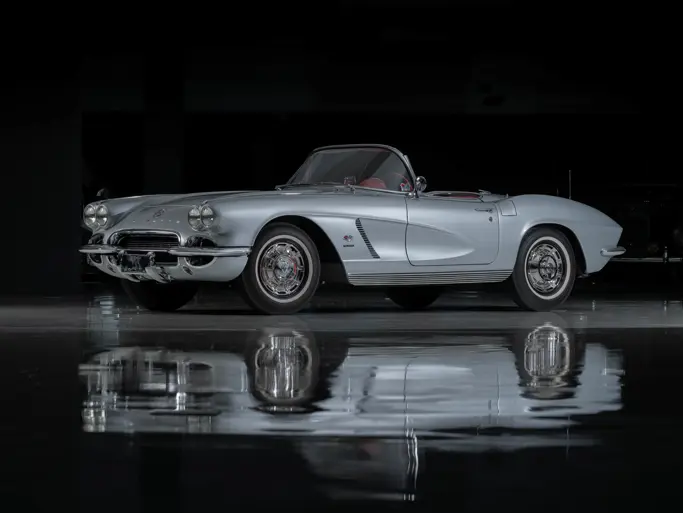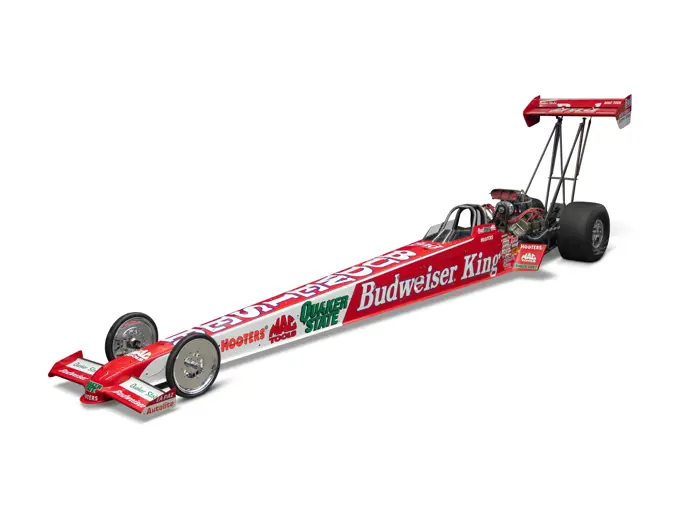Monterey 2023
1935 Auburn Eight Custom Speedster
{{lr.item.text}}
$750,000 - $950,000 USD | Not Sold
 | Monterey, California
| Monterey, California
{{internetCurrentBid}}
{{internetTimeLeft}}

- Regarded as the only example delivered in Custom trim, with a naturally aspirated engine
- Retains numbers-matching engine, chassis, and body
- Recent restoration in striking factory-correct colors
- A pure and unadorned version of Gordon Buehrig’s renowned design
- A Classic Car Club of America (CCCA) Full Classic
THE AUBURN SPEEDSTER
In the days when Bugattis crossed France and 4½-Litre Bentleys tore through the British countryside, the American equivalent was the Auburn speedster. Indiana’s Auburn Automobile Company revealed its first version of this dashing body style, inspired by a Duesenberg show car, for the 1928 model year and would offer variations on the theme through to the end of production in 1936.
The 1935–1936 speedsters were designed by the legendary Gordon Buehrig. Audacious by the standards of their time, they featured curvaceous bodywork with a straight hood line shooting back from the radiator to a sharply vee’d windshield, down between pontoon fenders, over gently sloping doors, and descending in a graceful taper to the rear bumper. It was this distinctive rear design, elegantly outlined by chrome and striping, that gave the speedster its everlasting nickname, “the Boattail.”
Underneath, the speedster shared the same exciting mechanicals as other supercharged Auburn models. Its power was sent to a Columbia dual-ratio rear axle, standard equipment on the supercharged models, which provided two ratios for each gear, one low and one high. The ratios could be changed as often as desired while at very low speeds or at a stop by moving the switch in the center of the steering wheel. This provided the supercharged Auburn with much greater flexibility, making it a true “driver’s car,” ideal for both purring through crowded cities and roaring down country lanes.
Each speedster bore on its dashboard a plaque inscribed, “This certifies that this AUBURN AUTOMOBILE has been driven 100.8 miles per hour before shipment.” It was signed by David “Ab” Jenkins, the speed-record driver who achieved some of his greatest successes at Bonneville behind the wheel of a late Auburn speedster. Of course, the plaques were merely factory decoration installed on the production line. Then again, no one who has driven these cars since has ever complained about a lack of speed!
THE UNIQUE AUBURN CUSTOM SPEEDSTER
Unusual as it may seem, not all of the glamorous speedsters were supercharged from the factory. Auburn factory records indicate that a single un-supercharged speedster was built, in the highest-tier naturally aspirated Custom trim with the two-speed Dual Ratio rear axle. This car was actually completed not in Connersville, like most 1935–1936 Auburns, but in the original Auburn production facility in its hometown of Auburn, Indiana. Purportedly its unusual specification is explained by its having been completed for show and exhibition purposes before the Auburn superchargers were ready, something supported by its relatively early serial number without the “3” prefix seen on supercharged examples. Further, both the serial and engine number tags remain original, as is the engine stamping on the block.
The un-supercharged speedster was formerly owned by Mark Vantatenbow of Michigan, in whose ownership it was included in the roster of surviving 851/852 speedsters, published in the Auburn Cord Duesenberg Club Newsletter in 1996. Subsequently it was acquired by Robert M. Pass and sold it to the late, prolific collector, John M. O’Quinn. From the O’Quinn collection it was acquired by Richard Burdick, who exhibited it in his Dick’s Classic Garage Museum in San Marcos, Texas, for a decade. A prominent Texas enthusiast acquired the car from the Burdick fleet in 2019, and soon undertook the immaculate fresh body-on-frame restoration seen on the Auburn today. The body was finished in an authentic but seldom-seen 1935 Auburn color, Duck Egg Blue, with the interior finished in rich, beautiful red leather.
Now in beautiful overall condition and fine running order, this is a very special example of the great Auburn speedster, one of the most significant American automobiles of the Classic Era.

